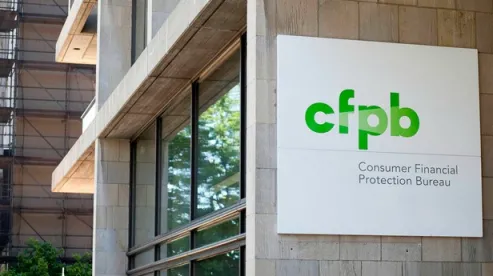As 2020 drew to a close, the Ninth Circuit gave the CFPB a victory in Consumer Fin. Prot. Bureau v. Seila Law LLC, 2020 U.S. App. LEXIS 40572 (9th Cir. Dec. 29, 2020), upholding the CFPB’s civil investigative demand (CID) to Seila Law. The case was on remand from the United States Supreme Court, which held that the statute establishing the CFPB violated the Constitution by placing leadership of the agency in the hands of a single Director who could only be removed for cause. Seila Law LLC v. CFPB, 140 S. Ct. 2183 (2020). The Supreme Court, however, concluded that the for-cause provision of the statute could be severed and did not require the invalidation of the entire agency; it then remanded the case back to the Ninth Circuit to determine whether the CFPB’s ratification of its earlier decision to issue the CID to Seila Law was valid. Just over a month after hearing oral argument on the ratification question, a unanimous panel of the Ninth Circuit held that on July 9, 2020, the CFPB’s current Director, Kathleen Kraninger, validly ratified the agency’s earlier decision to issue a CID to Seila Law.
The Ninth Circuit quickly disposed of the two primary arguments put forth by Seila Law to challenge Director Kraninger’s ratification of the Seila Law CID. First, relying on Federal Election Commission v. NRA Political Victory Fund, 513 U.S. 88 (1994), Seila Law argued that because the agency lacked the authority to issue the CID back in 2017, Director Kraninger’s 2020 ratification of such action was not valid. In other words, according to Seila Law, an action that was void at the time taken could not be later ratified. Finding the argument “largely foreclosed” by its earlier decision in Consumer Fin. Prot. Bureau v. Gordon, 819 F.3d 1179 (9th Cir. 2016), the Ninth Circuit concluded that the “the constitutional infirmity relates to the Director alone, not the legality of the agency itself” and that the defect with the provision relating to the removal of the Director did not “render[] all of the agency’s prior actions void.” As the Ninth Circuit noted, if that were the case, then there would have been no reason for the Supreme Court to remand the ratification question back to the Ninth Circuit.
The Ninth Circuit concluded that Seila Law’s second argument—that the ratification took place outside of the limitations period for bringing an enforcement action—was premature. The statutory limitations period relied upon by Seila Law applies only to the bringing of an enforcement action, which has not happened here. “The only actions ratified by Director Kraninger are the issuance and enforcement of the CID” against Seila Law. Whether Seila Law could successfully bring a statute-of-limitations defense to any future enforcement action has no bearing on the validity of the Director’s ratification of the CID to Seila Law.
The Ninth Circuit’s decision confirms our earlier blog (LINK HERE) that defendants seeking to challenge Bureau actions taken before the Supreme Court invalidated the statute’s removal provision have an uphill battle. The ratification issue is teed up in other cases around the country, so stay tuned to see whether any court sees the ratification issue differently than the Ninth Circuit.





 />i
/>i

